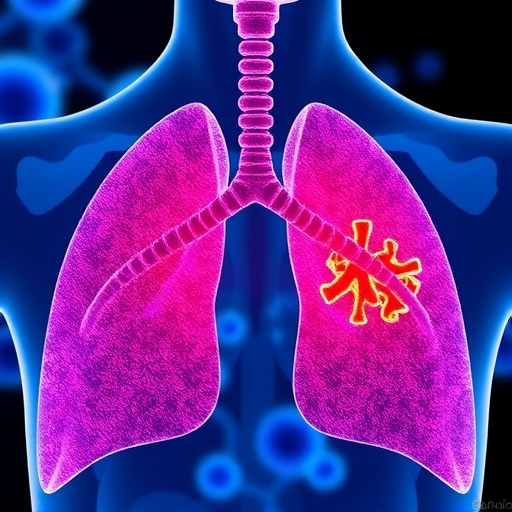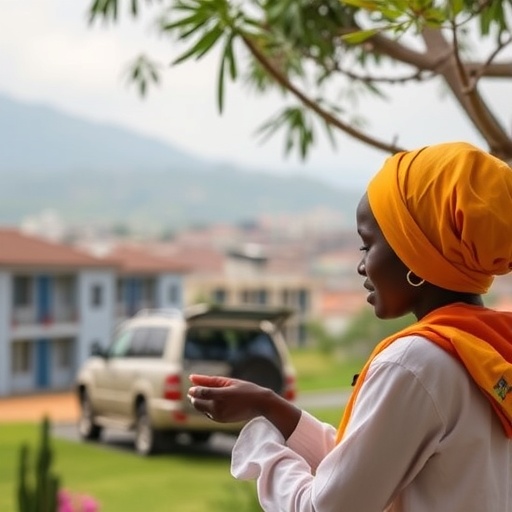
Recent advances in orthopedic surgery have illuminated the mechanical properties of graft materials used in anterior cruciate ligament (ACL) reconstruction. A pivotal study conducted by Lian, Sun, and Kong et al., investigates the short-term postoperative mechanical properties of grafts, focusing on their implications for recovery and long-term integrity. This research is crucial as it not only enhances our understanding of ACL repairs but also informs clinicians on optimal practices following surgery, potentially leading to improved patient outcomes.
The anterior cruciate ligament is integral to knee stability, and its reconstruction is one of the most commonly performed orthopedic procedures. Traditional graft options have included autografts, which take tissue from the patient, and allografts, which utilize donor tissue. Each graft type has its own mechanical characteristics that can significantly influence postoperative recovery. The study by Lian and colleagues specifically analyzes how these different grafts behave under stress shortly after surgery, providing insights that could radically change preoperative considerations for both doctors and patients.
In the context of ACL reconstruction, the immediate postoperative period is critical. This is when the knee is most vulnerable, and the mechanical properties of the graft can determine the success of the procedure. The researchers note that the peak load, stiffness, and cyclic load behavior of a graft are vital metrics that gauge its performance. By assessing these parameters, medical professionals can better predict a patient’s recovery trajectory and make informed decisions about rehabilitation protocols.
The mechanisms by which grafts incorporate into the host tissue, a process called “graft remodeling,” are complex and not wholly understood. The study emphasizes the importance of the initial strength of the graft during the early stages post-surgery. If a graft has not achieved sufficient strength before the rigorous rehabilitation begins, there is a higher risk of re-injury or graft failure. This realization underscores the need for detailed biomechanical assessments of grafts immediately following ACL reconstruction.
Lian et al. employed a range of testing methodologies to evaluate the mechanical properties of various grafts under conditions that mimic postoperative stress. These tests included tensile and cyclic loading assessments designed to replicate the forces the grafts would encounter during ordinary activities. This meticulous approach allowed the researchers to draw robust conclusions about the resilience and adaptability of different graft materials in real-world scenarios.
Furthermore, the study highlights the role of biological factors in graft strength. It posits that the biological healing environment created after surgery—shaped by factors such as inflammation and vascularization—can significantly influence the mechanical properties of the graft. This interaction between biological healing and mechanical assessment could lead to novel protocols in postoperative care that might enhance healing rates and reduce complications.
An equally important aspect of this research is its potential applications beyond ACL reconstruction. The findings may extend to other forms of soft tissue repair within orthopedics, such as repairs of the meniscus or rotator cuff tears. Understanding how different materials withstand stress post-operatively could guide surgeons in selecting the most appropriate graft for various orthopedic procedures, tailoring approaches to individual patient anatomy and activity levels.
Clinicians eager to apply these findings in practice should note the implications for rehabilitation timelines. With a clearer understanding of graft behavior immediately after surgery, rehabilitation protocols can be more effectively adjusted based on the specific graft used. This individualized approach can enhance recovery, putting patients on the fast track back to their pre-injury activities while minimizing the risk of re-injury.
As discussions around the material science of grafts continue to evolve, researchers emphasize the need for innovations in graft technology, including the development of hybrid materials that combine the benefits of both autografts and allografts. These innovations could pave the way for enhanced performance in the initial postoperative period and improve long-term outcomes for patients undergoing ACL reconstruction.
The contribution of Lian et al. extends beyond immediate practical applications; it sets the stage for future studies aimed at understanding the complex interplay between mechanical properties and biological healing. The hope is that continued research will provide definitive answers, further enhancing the precision of ACL reconstruction techniques and the overall success rates of these critical procedures.
In conclusion, the study of short-term postoperative mechanical properties of grafts in ACL reconstruction offers invaluable insights into the domain of orthopedic surgery. As medical professionals become better equipped with knowledge about the immediate strength and performance of different graft types, they can optimize surgical outcomes while pushing the boundaries of what is possible in reconstructive orthopedic procedures. Ultimately, this advances the goal of restoring patients to full function and improving their quality of life.
Subject of Research: Short-Term Postoperative Mechanical Properties of Graft in Anterior Cruciate Ligament Reconstruction
Article Title: Short-Term Postoperative Mechanical Properties of Graft in Anterior Cruciate Ligament Reconstruction
Article References: Lian, Z., Sun, B., Kong, X. et al. Short-Term Postoperative Mechanical Properties of Graft in Anterior Cruciate Ligament Reconstruction. J. Med. Biol. Eng. 45, 325–335 (2025). https://doi.org/10.1007/s40846-025-00952-5
Image Credits: AI Generated
DOI: https://doi.org/10.1007/s40846-025-00952-5
Keywords: Anterior Cruciate Ligament, ACL Reconstruction, Graft Properties, Orthopedic Surgery, Biomechanics, Rehabilitation, Graft Remodeling, Soft Tissue Repair
Tags: ACL reconstruction mechanicsanterior cruciate ligament repairautografts vs allograftsimplications for patient outcomesknee stability after surgerymechanical characteristics of graftsorthopedic surgery advancementspostoperative graft propertiespreoperative considerations in ACL surgeryresearch on graft integrity in ACL repairsshort-term recovery in ACL reconstructionstress behavior of grafts




